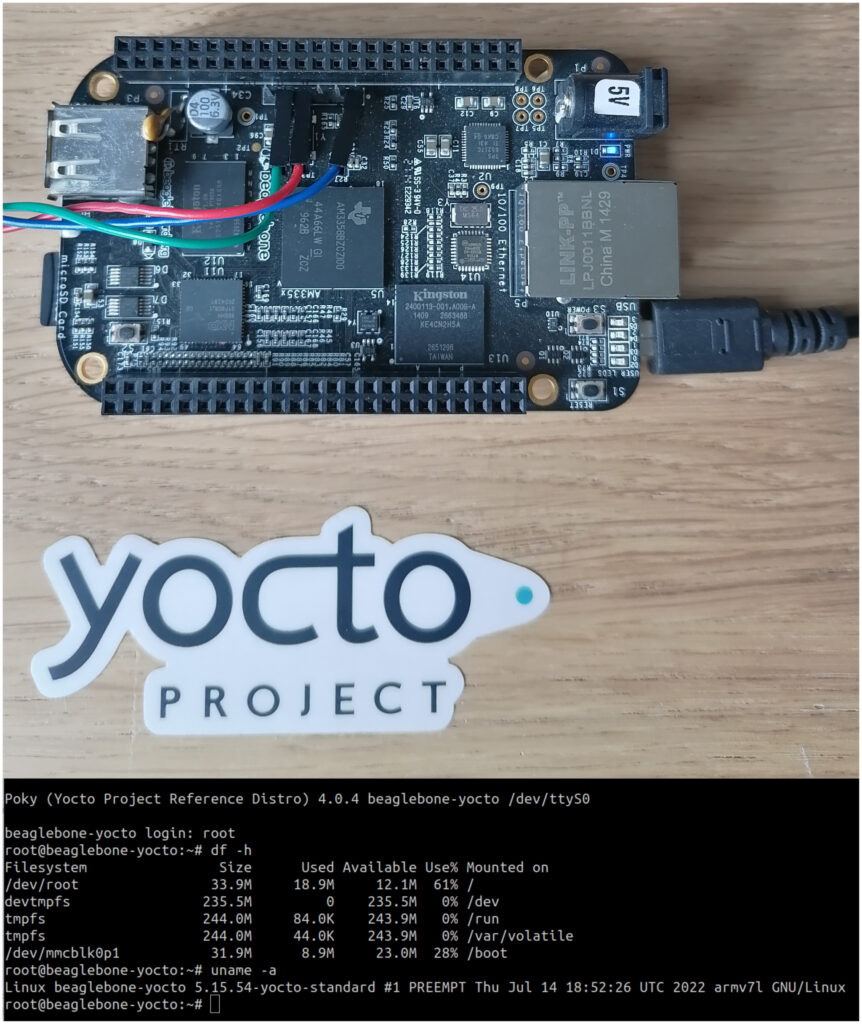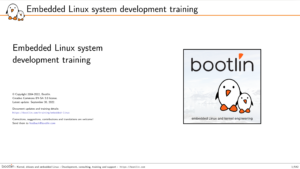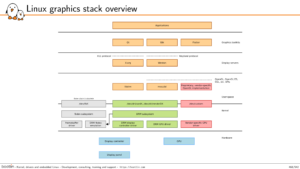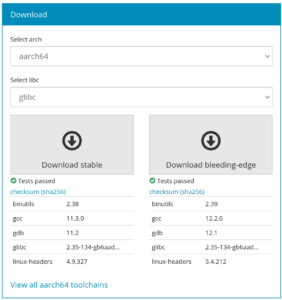Linux 6.0 has been released two weeks ago, and Linux 6.1-rc1 is already out of the door, but we didn’t get the chance to look at the contributions made by Bootlin to the Linux 6.0 release. Before we do that, let’s provide our usual must-read articles on Linux 6.0: the Linux 6.0 merge window part 1 and Linux 6.0 merge window part 2 LWN.net articles and the KernelNewbies.org article.
On Bootlin side, our significant contributions to this release have been:
- Clément Léger contributed a new driver for the Ethernet switch found in the Renesas RZ/N1 processor, as well as a PCS driver for the MII converter of the same processor. Obviously, this came with the related Device Tree bindings and Device Tree changes, but also with a few small changes in the DSA subsystem.
- Hervé Codina enabled support for the PCIe controller found in the same Renesas RZ/N1 processor, which in fact does not allow to use PCIe devices, but USB devices: this PCIe controller is only used to connect to an internal USB controller in the chip, which therefore allows to use USB devices.
- Köry Maincent extended the existing mpc4922 DAC IIO driver to also support the mpc4921 variant, which has only one output channel instead of two.
- Luca Ceresoli contributed several improvements to the I2C subsystem documentation.
- Paul Kocialkowski contributed a new DRM driver for the logiCVC-ML display controller IP
- Paul Kocialkowski contributed two new V4L drivers for the MIPI CSI-2 camera interfaces available in the Allwinner A31 family of processors (sun6i) and the Allwinner A83T family of processors (sun8i).
Here is the full details of our contributions, commit by commit:
- Alexandre Belloni (2):
- Clément Léger (30):
- of: constify of_property_check_flags() prop argument
- usb: host: ohci-at91: add support to enter suspend using SMC
- ARM: dts: r9a06g032-rzn1d400-db: Enable rtc0
- net: dsa: allow port_bridge_join() to override extack message
- net: dsa: add support for ethtool get_rmon_stats()
- net: dsa: add Renesas RZ/N1 switch tag driver
- dt-bindings: net: pcs: add bindings for Renesas RZ/N1 MII converter
- net: pcs: add Renesas MII converter driver
- dt-bindings: net: dsa: add bindings for Renesas RZ/N1 Advanced 5 port switch
- net: dsa: rzn1-a5psw: add Renesas RZ/N1 advanced 5 port switch driver
- net: dsa: rzn1-a5psw: add statistics support
- net: dsa: rzn1-a5psw: add FDB support
- dt-bindings: net: snps,dwmac: add “power-domains” property
- dt-bindings: net: snps,dwmac: add “renesas,rzn1” compatible
- ARM: dts: r9a06g032: describe MII converter
- ARM: dts: r9a06g032: describe GMAC2
- ARM: dts: r9a06g032: describe switch
- ARM: dts: r9a06g032-rzn1d400-db: add switch description
- MAINTAINERS: add Renesas RZ/N1 switch related driver entry
- pinctrl: ocelot: allow building as a module
- ARM: dts: r9a06g032: Describe MII converter
- ARM: dts: r9a06g032: Describe GMAC2
- ARM: dts: r9a06g032: Describe switch
- reset: microchip-sparx5: allow building as a module
- dt-bindings: net: pcs: add bindings for Renesas RZ/N1 MII converter
- ARM: dts: r9a06g032-rzn1d400-db: Add switch description
- net: pcs: rzn1-miic: update speed only if interface is changed
- dt-bindings: net: dsa: renesas,rzn1-a5psw: add interrupts description
- ARM: at91: add sam_linux_is_optee_available() function
- ARM: at91: setup outer cache .write_sec() callback if needed
- Herve Codina (6):
- dt-bindings: PCI: pci-rcar-gen2: Convert bindings to json-schema
- dt-bindings: PCI: renesas,pci-rcar-gen2: Add device tree support for R9A06G032
- PCI: rcar-gen2: Add RZ/N1 SOC family compatible string
- dt-bindings: usb: atmel: Add Microchip LAN9662 compatible string
- dt-bindings: usb: atmel: Add Microchip LAN9662 compatible string
- ARM: dts: lan966x: Add UDPHS support
- Kory Maincent (2):
- Luca Ceresoli (11):
- docs: i2c: i2c-protocol: update introductory paragraph
- docs: i2c: i2c-protocol,smbus-protocol: remove nonsense words
- docs: i2c: i2c-protocol: remove unused legend items
- docs: i2c: smbus-protocol: improve DataLow/DataHigh definition
- docs: i2c: instantiating-devices: add syntax coloring to dts and C blocks
- docs: i2c: i2c-sysfs: improve wording
- docs: i2c: i2c-sysfs: fix hyperlinks
- .mailmap: update Luca Ceresoli’s e-mail address
- docs: i2c: i2c-topology: fix typo
- docs: i2c: i2c-topology: fix incorrect heading
- docs: i2c: i2c-topology: reorder sections more logically
- Miquel Raynal (3):
- Paul Kocialkowski (7):
- drm: Add support for the LogiCVC display controller
- media: dt-bindings: media: sun6i-a31-csi: Add MIPI CSI-2 input port
- media: dt-bindings: media: Add Allwinner A31 MIPI CSI-2 bindings documentation
- media: sunxi: Add support for the A31 MIPI CSI-2 controller
- media: MAINTAINERS: Add entry for the Allwinner A31 MIPI CSI-2 bridge driver
- media: dt-bindings: media: Add Allwinner A83T MIPI CSI-2 bindings documentation
- media: sunxi: Add support for the A83T MIPI CSI-2 controller




 The
The  We are happy to announce that
We are happy to announce that 
